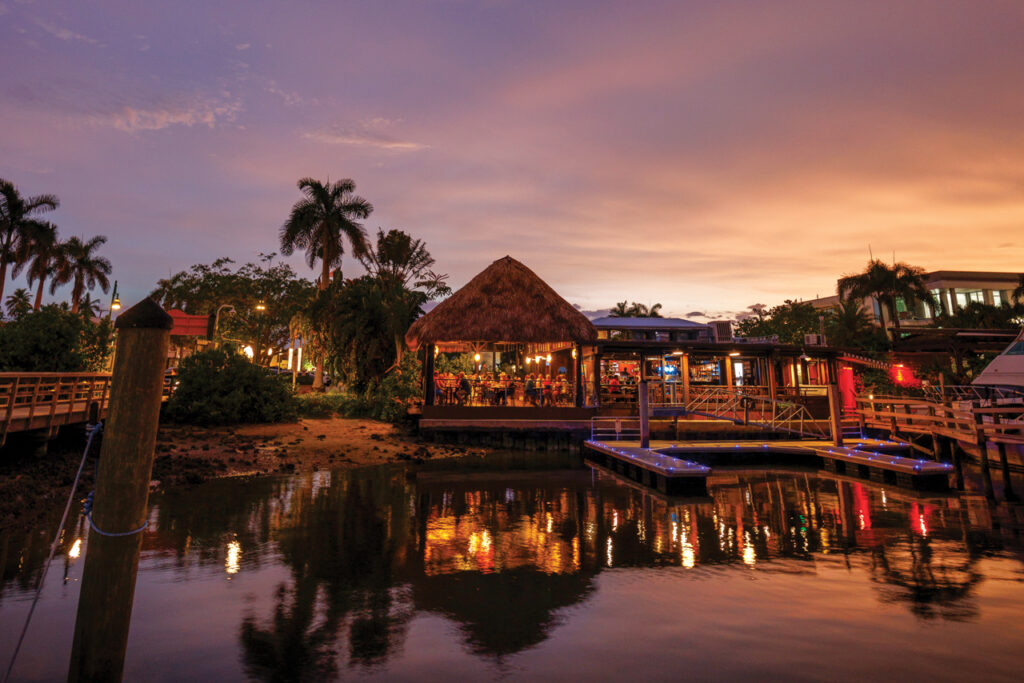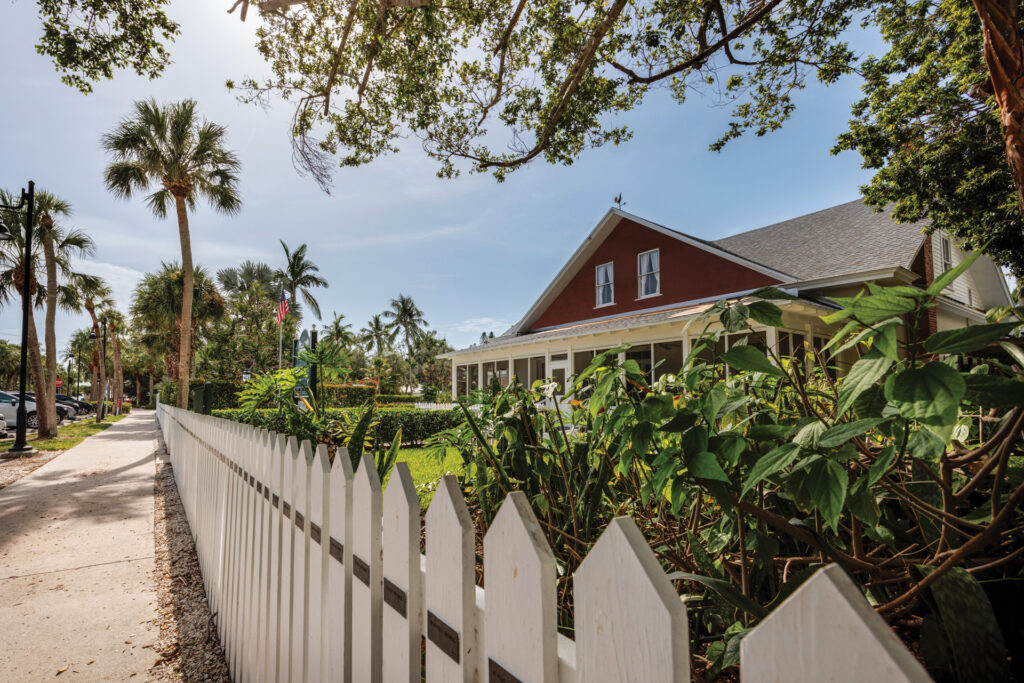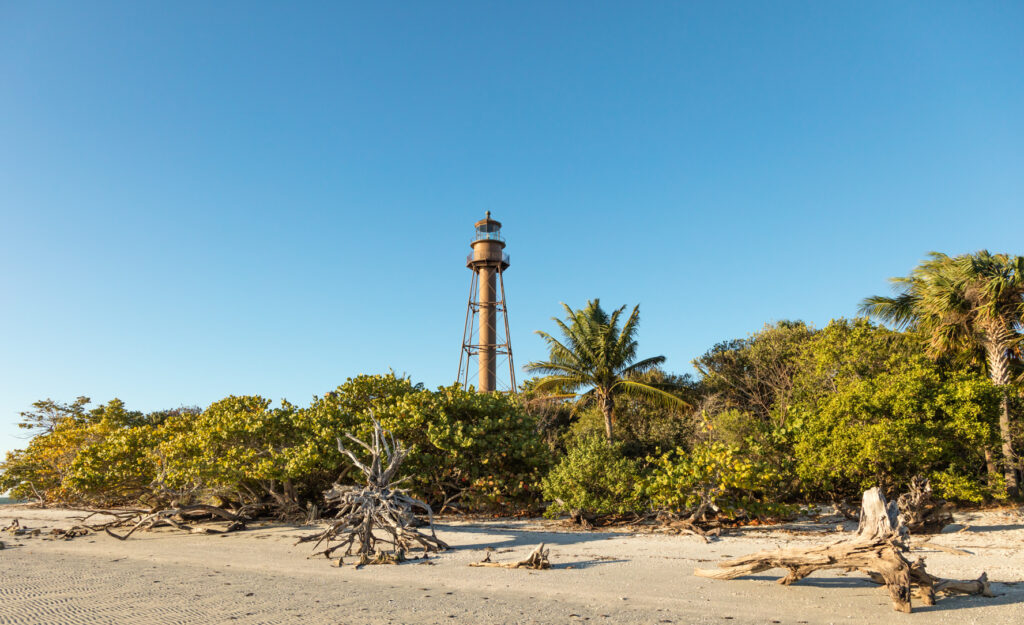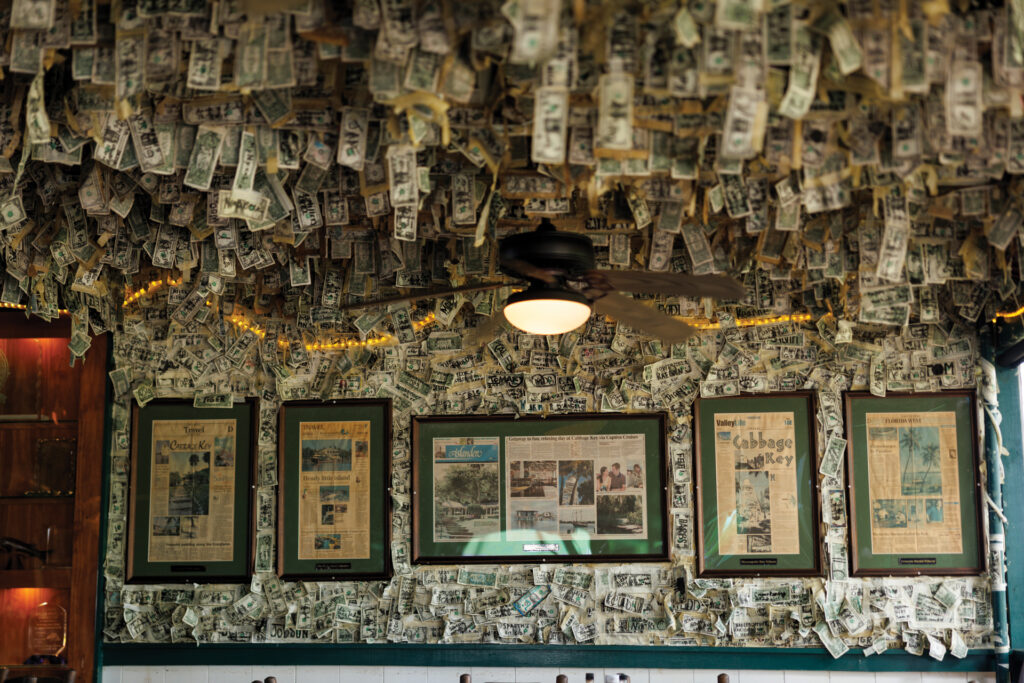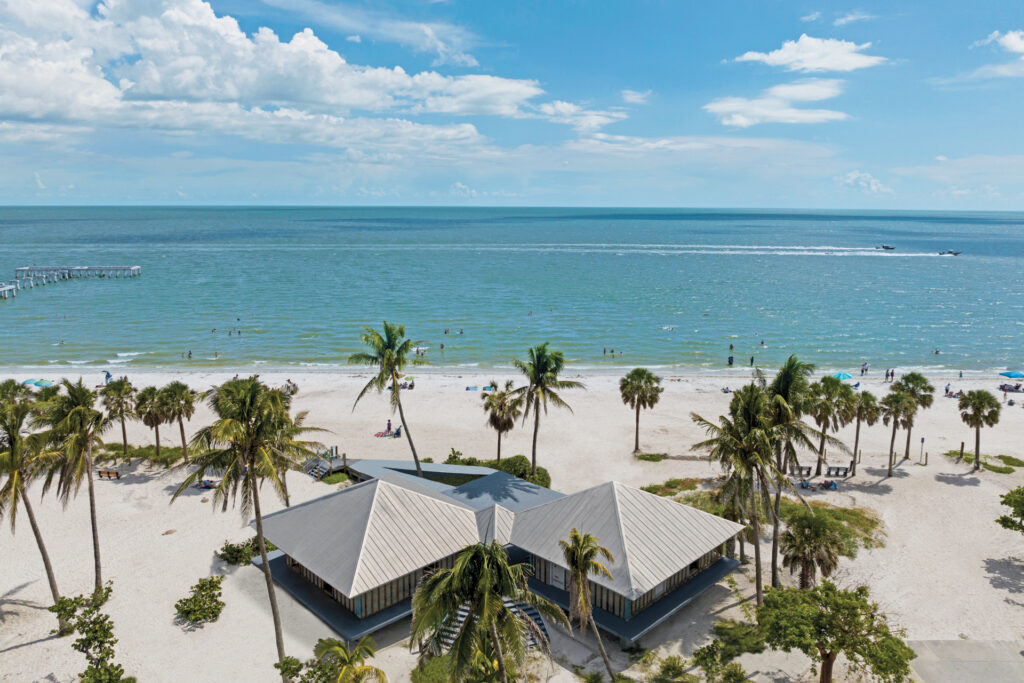J.N. “Ding” Darling National Wildlife Refuge
Sanibel was gray the day Toni Westland and her colleagues returned to the J.N. “Ding” Darling National Wildlife Refuge. Gray silt. Gray sludge. Gray forests, stripped of green leaves. But, wait, a flash of brown—Toni, the supervisory refuge ranger, and fellow ranger Jessica Barry fixed their eyes on the movement in the parking lot and saw a bobcat.
In the days, weeks and months to come, nature revealed more signs of survival: three baby raccoons nesting in a strangler fig, a freshly dug gopher tortoise burrow. The wading birds returned. The park started having sightings of mangrove cuckoos, one of the Refuge’s most “secretive” residents, a species sought by birders all over the world.
The Refuge’s famed 4-mile Wildlife Drive and many of the trails are now reopened, so guests can witness nature’s resilience themselves. “It’s those little bits of hope,” Toni says. “If they made it, we can make it.”
Tin City
The 100-year-old Tin City, along the Gordon River, has the grit of a commercial fisherman—unsurprising since it was erected in the 1920s to serve anglers, and clam and oyster processors. The quirky, colorful complex, which became a marketplace in the ’70s, took a beating during Hurricane Ian. Then, with the maritime bad luck of a red-sky morning, it suffered another blow Thanksgiving night when a car careened through a wall. “You can’t make this stuff up,” the team declared on the website.
By Dec. 15, every store but those at the crash site were open (the rest were online by May). All 30-plus tenants—mostly mom-and-pops as delightfully original as the marketplace itself—survived. “Listen, there’s nothing like this, and there won’t be anything like this,” property manager Craig Ekonomos says. “It’s eclectic. It’s local. The authenticity of Naples’ past is really reflected in it.”
The Dock at Crayton Cove
There’s an inviting new tiki hut at The Dock at Crayton Cove, one of Naples’ oldest dining establishments. The thatched roof beckons diners to sit in the shade, sip a cocktail and savor a bite of fresh catch. The structure was among the fixes and upgrades following Hurricane Ian, which spewed 5 feet of water across the 47-year-old establishment. Before reopening in December, the team took the opportunity to make over the restaurant to get it ready for the next 50 years.
Fear not, Neapolitans. The elements that endear the Dock to the community remain intact—the service, the seafood, the waterfront views, the bloody marys, and the honoring of the past, including a wall of old photos that routinely prompts guests to exclaim, “I was there!” or “I remember that!”
In managing the restaurant, co-owners Dan Groom-Traina and his dad, Doug Traina, balance past and future—a challenge never more present than when cleaning up after the likes of Ian. “As Naples changes, we evolve with it, but we still remain that classic place that we feel proud of,” Dan says.
Historic Palm Cottage
Naples Historical Society CEO Elaine Reed called the sludge “Gulf of Mexico seabed mud and muck,” a fetid mix of mud and fish remnants saturating the floorboards of the first house built in Naples, the 1895 Historic Palm Cottage, on which generations of families had trod and now tens of thousands of annual visitors traverse as they journey into the city’s past.
Crafted from Dade County pine, those floors are to the house what the house is to the community, and there was simply no way the society would let either go to ruin. Elaine engaged master carpenter John Brechel, who pulled every plank for a months-long restoration. He and his team saved 93 percent of the floors. On reopening day, April 4, the dark-stained pine gleamed. “The story we tell is not merely one of architectural history. We use this house to talk about early Naples and how Naples came into being,” Elaine says. “There is no one else who does this. This is our duty. This is proper stewardship, and we take this role very seriously.”
Florida Repertory Theatre
Florida Repertory Theatre raised its mainstage curtain a mere 27 days after Ian flooded its orchestra pit, soaked its dressing rooms, and spewed mud through its entryway.
The reopening show—Incident at Our Lady of Perpetual Help, a comedy about an Irish-Catholic teen in the 1970s—was a testament to their must-go-on fortitude and the troupe’s determination to distract and delight. “I received some of the greatest correspondence from patrons, thanking me and thanking the theater for producing such a great piece at a time when it was needed most,” artistic director Greg Longenhagen says.
As big a presence as the characters on stage: The 108-year-old Historic Arcade Theatre, with its velvet seats, paneled walls and retro neon sign illuminating Downtown Fort Myers. “For the last 26 years, there have been performances almost daily in that space,” Greg says. “When you have sound, music, voices and laughter bouncing around in a theater’s walls, it seasons the space.”
Sanibel Lighthouse
Sanibel Lighthouse’s story started with a topple into the sea. The late 19th-century iron structure was en route to Sanibel when the schooner transporting it sunk 2 miles offshore. Divers retrieved all but a couple brackets, crews assembled the 98-foot structure, and the inaugural keeper flashed the light for the first time on Aug. 20, 1884.
One submersion, apparently, was enough. In the early hours after Ian, rumors flew that the lighthouse had fallen. They were followed by gleeful proclamations of its survival. The lighthouse—that symbol of Sanibel—was merely damaged. The structure stood, minus a leg, at the island’s easternmost tip where it has illuminated the shoreline for 139 years.
Crews worked to outfit the lighthouse with a temporary wooden brace to stabilize the structure, and on Feb. 28, the community cheered as city officials lit the light for the first time since Ian’s landfall.
Cabbage Key Inn & Restaurant
What drama might early-1900s American mystery novelist Mary Roberts Rinehart have spun out of Hurricane Ian? We suggest “The Case of the Indestructible House.” The author’s children built the six-bedroom house perched atop a 33-foot Calusa shell mound in 1936. “They really thought it through and overbuilt everything,” says Rob Wells III, whose family has owned and operated the private island of Cabbage Key, where the house stands, since the 1970s.
The house is made from the heartwood of pine, built atop a concrete foundation, and outfitted with hurricane shutters, still deployed to this day. And if you’re worried about the restaurant where tens of thousands of visitors have affixed dollar bills to the walls, fear not: The dining room and souvenir loot were undamaged. “I grew up out there,” Rob says. “This is different than owning a business. It’s something you love. It’s part of your life. We see ourselves as stewards of this property, and we keep it up so future generations can experience the things that were so special to us.”
Times Square & Fort Myers Beach Pier
Nine months after Ian, the Fort Myers Beach fishing pier remains mere concrete pilings. Look at it with one mindset, and the scene hurts—a reminder of what was there and is now lost. But consider a different one, and those pilings are a foundation on which the pier—and its community—will be restored.
Times Square has empty slabs where longtime businesses once stood, but there are signs of resurgence, too: Meli’s Ice Cream operating out of a food truck, Bella Mozzarella Pizza & Grill declaring, “We Are Open,” a bouquet of balloons at the Cold Stone Creamery. The concrete walkway with its Copacabana-esque swirls still beckons visitors toward the beach at Lynn Hall Memorial Park, the heart of the island’s festivities.
On a Sunday morning, a street performer practiced his tricks. A bearded, leather-skinned man made his way toward the water, a parrot perched on either shoulder. Indeed, the Beach’s foundation stands strong.



